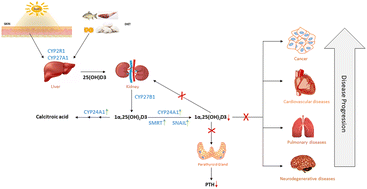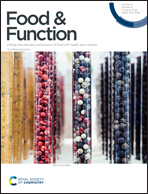Vitamin D resistant genes – promising therapeutic targets of chronic diseases
Abstract
Vitamin D is an essential vitamin indispensable for calcium and phosphate metabolism, and its deficiency has been implicated in several extra-skeletal pathologies, including cancer and chronic kidney disease. Synthesized endogenously in the layers of the skin by the action of UV-B radiation, the vitamin maintains the integrity of the bones, teeth, and muscles and is involved in cell proliferation, differentiation, and immunity. The deficiency of Vit-D is increasing at an alarming rate, with nearly 32% of children and adults being either deficient or having insufficient levels. This has been attributed to Vit-D resistant genes that cause a reduction in circulatory Vit-D levels through a set of signaling pathways. CYP24A1, SMRT, and SNAIL are three genes responsible for Vit-D resistance as their activity either lowers the circulatory levels of Vit-D or reduces its availability in target tissues. The hydroxylase CYP24A1 inactivates analogs and prohormonal and/or hormonal forms of calcitriol. Elevation of the expression of CYP24A1 is the major cause of exacerbation of several diseases. CYP24A1 is rate-limiting, and its induction has been correlated with increased prognosis of diseases, while loss of function mutations cause hypersensitivity to Vit-D. The silencing mediator of retinoic acid and thyroid hormone receptor (SMRT) and its corepressor are involved in the transcriptional repression of VDR-target genes. SNAIL1 (SNAIL), SNAIL2 (Slug), and SNAIL3 (Smuc) are involved in transcriptional repression and binding to histone deacetylases and methyltransferases in addition to recruiting polycomb repressive complexes to the target gene promoters. An inverse relationship between the levels of calcitriol and the epithelial-to-mesenchymal transition is reported. Studies have demonstrated a strong association between Vit-D deficiency and chronic diseases, including cardiovascular diseases, diabetes, cancers, autoimmune diseases, infectious diseases, etc. Vit-D resistant genes associated with the aforementioned chronic diseases could serve as potential therapeutic targets. This review focuses on the basic structures and mechanisms of the repression of Vit-D regulated genes and highlights the role of Vit-D resistant genes in chronic diseases.

- This article is part of the themed collection: Food & Function Review Articles 2022


 Please wait while we load your content...
Please wait while we load your content...